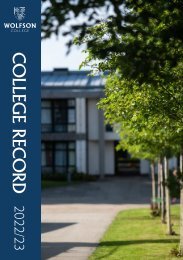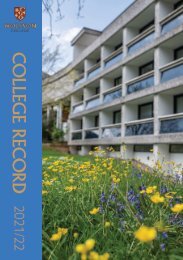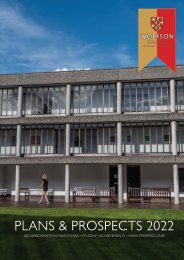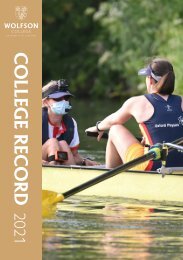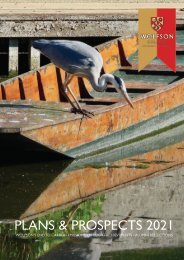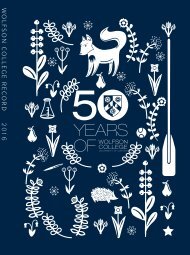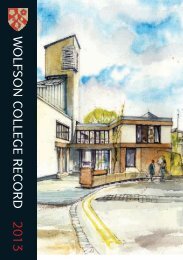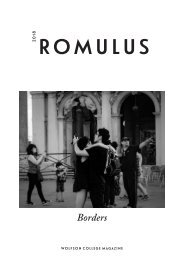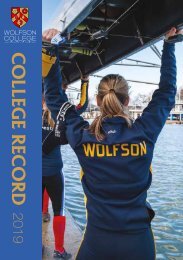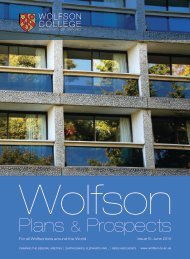You also want an ePaper? Increase the reach of your titles
YUMPU automatically turns print PDFs into web optimized ePapers that Google loves.
Cupboards and Crypts: chasing after<br />
Roman sculpture in England<br />
by Martin Henig (SF 1998–2009, MCR 2009–)<br />
I am often asked what research I do, and even (very occasionally) what I am doing<br />
in Wolfson. If I reply that I am an archaeologist, conversation immediately shifts<br />
to the places I have excavated, generally assumed to be on some distant sun-soaked<br />
shore. Alas, I have to disabuse them for I have virtually never worked outside<br />
England, and the only digging I have done, apart from my garden, has been in halfderelict<br />
museum stores, generally in search of the sculptures, tombstones, altars<br />
and fragments of architectural moulding which once gave this country something<br />
of the appearance of Roman Italy. Most of my research has been for the British<br />
section of the great international project designed to record every sculpture in the<br />
Roman Empire, grandiloquently entitled Corpus Signorum Imperii Romani.<br />
There are not too many people working on Romano-British art and culture which<br />
too many Classical Archaeologists regard as the Cinderella of Roman studies.<br />
However, for me the brightest aspect of basing myself here is that most of them are<br />
at Wolfson. Peter Stewart has published on Romano-British sculpture, while Roger<br />
Tomlin is more than familiar with recording Roman stone in curious places. Roger<br />
is, of course, the authority on epigraphy (inscriptions) which often graced the<br />
same monument or other item; for example, we worked together on two important<br />
inscribed tombstones from Gloucester, excavated by Oxford Archaeology and<br />
taken to their rather bleak store in Abingdon. I am pleased to say they are now<br />
proudly displayed in Gloucester Museum.<br />
Sometimes sculptures are immediately accessible in well regulated museums, but I<br />
found one altar discovered in restoring Uppington Church near Wroxeter in 1885,<br />
mouldering away in the churchyard; and writing of churchyards, I recall visiting<br />
a dingy chapel in a cemetery where Cirencester Museum had stored some of its<br />
sculpture, and having to feel the contours of the best piece, an image of Mercury,<br />
which was not accessible to sight. But this was as nothing compared with a Chester<br />
store in which an amazing collection of tombstones recovered from the North Wall<br />
of the Fortress, some of them by the young E F Benson, were consigned to a leaky<br />
lock-up under tarpaulins and in some cases totally out of sight. Thank goodness<br />
some excellent photographs had been taken forty years earlier. But that was not the<br />
worst scenario: accidents can happen, and part of a London store was bulldozed;<br />
115



